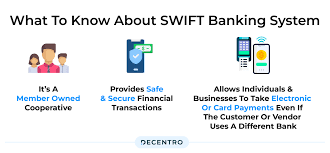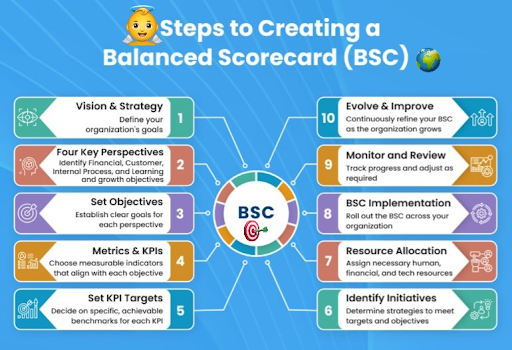101 Ways SWIFT and Sanctions Impact International Relations Through the Banking System in 2024
The Society for Worldwide Interbank Financial Telecommunication (SWIFT) is a cornerstone of the global banking system, facilitating secure and standardized communication between financial institutions. In 2024, the interplay between SWIFT, sanctions, and international relations has never been more crucial. Here are 101 ways in which SWIFT and sanctions impact international relations through the banking system:
Financial Sanctions and Economic Pressure
- Economic Isolation: Sanctions isolate targeted countries from the global financial system.
- Asset Freezes: Freezing assets of individuals and entities restricts their financial operations.
- Trade Barriers: Sanctions can impede international trade by restricting access to financial services.
- Currency Devaluation: Restricted access to international markets can lead to currency devaluation.
- Inflation: Economic isolation can cause domestic inflation due to supply chain disruptions.
Political Leverage
- Diplomatic Pressure: Sanctions are used as a tool for diplomatic pressure.
- Regime Change: Sanctions can destabilize regimes by crippling their economies.
- Human Rights: Sanctions can be imposed to penalize human rights abuses.
- Non-Proliferation: They help prevent the spread of nuclear and other weapons.
- Counter-Terrorism: Targeting the financial networks of terrorist organizations.
Compliance and Enforcement
- Global Compliance: Banks worldwide must comply with international sanctions.
- Regulatory Penalties: Non-compliance can result in hefty fines for financial institutions.
- Reputation Management: Banks risk reputational damage if they violate sanctions.
- AML/CFT: Anti-money laundering and counter-financing of terrorism measures are enforced.
- Due Diligence: Enhanced due diligence is required for transactions involving sanctioned entities.
Banking Operations
- Transaction Monitoring: Banks use SWIFT messages to monitor transactions for compliance.
- Account Restrictions: Accounts linked to sanctioned individuals are restricted.
- Correspondent Banking: Sanctions can sever correspondent banking relationships.
- Payment Delays: Sanctions can cause delays in international payments.
- SWIFT Message Screening: Automated systems screen SWIFT messages for sanctioned entities.
International Trade
- Trade Finance: Sanctions affect letters of credit and trade finance operations.
- Supply Chain Disruptions: Restricted financial transactions can disrupt supply chains.
- Export Controls: Sanctions include restrictions on the export of goods and technology.
- Import Restrictions: Limitations on imports from sanctioned countries.
- Dual-Use Goods: Monitoring of goods that can be used for both civilian and military purposes.
Multilateral Coordination
- UN Sanctions: Coordination of sanctions through United Nations resolutions.
- EU Sanctions: European Union's role in imposing and coordinating sanctions.
- US Sanctions: Influence of US sanctions enforced by the Office of Foreign Assets Control (OFAC).
- G7/G20: Coordination among major economies for sanctions enforcement.
- Regional Sanctions: Sanctions imposed by regional bodies like the African Union.
Technological Advancements
- Blockchain: Use of blockchain to enhance transparency in compliance.
- AI and ML: Artificial intelligence and machine learning for transaction monitoring.
- RegTech: Regulatory technology solutions for compliance and monitoring.
- Cybersecurity: Enhanced cybersecurity measures to protect against sanctions evasion.
- Digital Currencies: Impact of digital currencies on sanctions enforcement.
Financial Networks
- Alternative Networks: Development of alternative financial networks like Russia's SPFS.
- Cryptocurrencies: Use of cryptocurrencies to bypass traditional banking channels.
- Peer-to-Peer Lending: Growth of peer-to-peer lending platforms in sanctioned countries.
- FinTech Innovations: Financial technology innovations impacting sanctions compliance.
- Cross-Border Payments: Evolution of cross-border payment systems under sanctions.
Economic Impact on Sanctioned Countries
- GDP Reduction: Significant reduction in GDP due to economic sanctions.
- Unemployment: Increase in unemployment rates.
- Investment Decline: Decline in foreign direct investment.
- Private Sector Strain: Strain on the private sector due to restricted access to capital.
- Public Sector Challenges: Challenges for public sector financing and infrastructure projects.
Impact on Global Markets
- Commodity Prices: Influence of sanctions on global commodity prices.
- Energy Markets: Impact on oil and gas markets.
- Stock Markets: Volatility in global stock markets due to sanctions.
- Foreign Exchange Markets: Fluctuations in currency exchange rates.
- Investment Funds: Changes in investment fund strategies to comply with sanctions.
Humanitarian Considerations
- Humanitarian Exemptions: Exemptions for humanitarian aid and essential goods.
- Medical Supplies: Ensuring access to medical supplies despite sanctions.
- Food Security: Addressing food security issues in sanctioned countries.
- NGO Operations: Impact on non-governmental organizations operating in sanctioned areas.
- Remittance Flows: Ensuring remittance flows to support families in sanctioned countries.
Legal and Regulatory Frameworks
- Sanctions Legislation: National and international legislation governing sanctions.
- Legal Challenges: Legal challenges and disputes related to sanctions.
- Compliance Programs: Development of robust compliance programs in banks.
- Regulatory Guidance: Guidance from regulatory bodies on sanctions compliance.
- Case Law: Impact of case law on sanctions enforcement.
Strategic and Geopolitical Dynamics
- Geopolitical Tensions: Influence of sanctions on geopolitical tensions.
- Alliances and Rivalries: Shifts in international alliances and rivalries.
- Diplomatic Negotiations: Role of sanctions in diplomatic negotiations.
- Regional Stability: Impact on regional stability and security.
- Global Influence: Use of sanctions to exert global influence.
Corporate Governance and Risk Management
- Risk Assessments: Conducting comprehensive risk assessments.
- Internal Controls: Strengthening internal controls for sanctions compliance.
- Board Oversight: Board of directors' role in overseeing compliance.
- Audit and Assurance: Regular audits and assurance activities.
- Ethical Considerations: Ethical considerations in implementing sanctions.
Impact on Business Operations
- Market Exit: Decisions to exit markets due to sanctions.
- Supply Chain Diversification: Diversifying supply chains to mitigate risks.
- Contractual Obligations: Managing contractual obligations under sanctions.
- Joint Ventures: Impact on joint ventures and partnerships.
- Business Continuity: Ensuring business continuity despite sanctions.
Data and Privacy
- Data Protection: Protecting sensitive data in compliance with sanctions.
- Privacy Laws: Compliance with privacy laws while enforcing sanctions.
- Data Sharing: Sharing data with regulatory authorities.
- Data Analytics: Use of data analytics for sanctions compliance.
- Cyber Threats: Addressing cyber threats related to sanctions evasion.
Financial Stability and Systemic Risk
- Systemic Risk: Assessing the systemic risk of sanctions on the global financial system.
- Financial Stability: Ensuring financial stability amid sanctions.
- Liquidity Management: Managing liquidity in the face of sanctions.
- Capital Adequacy: Maintaining capital adequacy ratios.
- Crisis Management: Crisis management strategies for banks.
Future Trends
- Evolving Sanctions Regimes: Anticipating changes in sanctions regimes.
- Global Cooperation: Enhancing global cooperation on sanctions enforcement.
- Technological Innovation: Leveraging technological innovation for compliance.
- Regulatory Evolution: Adapting to evolving regulatory requirements.
- Sustainable Finance: Integrating sanctions compliance with sustainable finance initiatives.
Education and Training
- Employee Training: Regular training programs for employees.
- Certifications: Professional certifications in sanctions compliance.
- Awareness Campaigns: Raising awareness about sanctions compliance.
- Knowledge Sharing: Sharing best practices within the industry.
- Continuous Learning: Encouraging continuous learning and development.
Global Trade Dynamics
- Trade Policies: Influence of sanctions on global trade policies.
- Export Controls: Implementation of export controls.
- Import Regulations: Adherence to import regulations.
- Trade Agreements: Impact on international trade agreements.
- Customs Procedures: Compliance with customs procedures.
Case Studies and Lessons Learned
- Case Studies: Analyzing case studies of sanctions implementation and their impact.
- Lessons Learned: Drawing lessons from past sanctions regimes to improve future strategies.














